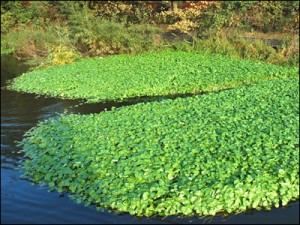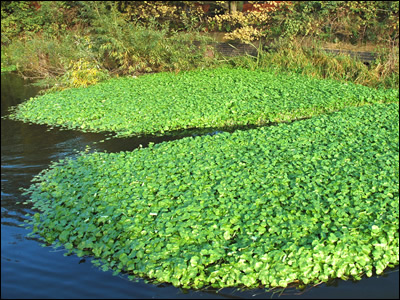Many lakes, ponds and other waterways in the UK are under threat from a whole host of invasive aquatic plants invasion of rapid growing, non-native aquatic plants. The five most damaging non-native species were banned from sale in April this year, however the work to clear these species from our waterways continues.
 But it’s not only these “5 most wanted” species that cause problems -there is an extensive list of invasive aquatic plants that can take over a body of water and negatively impact the aquatic environment leading to the loss of other plants and wildlife. Take a look at this guide to identify them.
But it’s not only these “5 most wanted” species that cause problems -there is an extensive list of invasive aquatic plants that can take over a body of water and negatively impact the aquatic environment leading to the loss of other plants and wildlife. Take a look at this guide to identify them.
The following 5 non-native species of invasive aquatic plant are now banned from sale and sightings should be reported to enable swift eradication:
Australian Swamp Stonecrop (Crassula Helmsii)
Grows around the damp margins of freshwater ponds and in water up to 3 metres deep. It forms dense, choking carpets which reduce light levels in the water below, causing die off of native species and reducing oxygen levels.
Floating Pennywort
These invasive aquatic plants (pictured above) forms dense mats of rounded leaves that float across the water surface. It’s rapid growth rate (up to 20cm per day) means is rapidly crowds out native species, causing an imbalance in oxygen levels in the water, and a subsequent threat to aquatic wildlife and choking drainage systems.
Water Fern (Azolla filiculoides)
Parrot’s Feather (Myriophyllum aquaticum)
Water Primrose Ludwigia peploides
Originally introduced as an ornamental and water garden plant, this species bears bright yellow flowers but can cause havoc if released in the wild. Water primrose can have a devastating effect on native habitats with its rampant growth out-competing native species clogging and dense vegetation contributing to flooding. It spreads primarily by stem fragments but also by seeds which means it can spread quickly and it can make eradication difficult.
For help identifying any invasive aquatic plant, take a look at Aquatic Solutions guide here.
Alternatively, complete our contact form at the bottom of the page and upload photographs.
Each species of plant will require tackling in a slightly different way, whether harvesting, cutting, excavating or in some cases (under special license), spraying.
The Aquatic Solutions team have the skills, knowledge and experience to tackle all invasive aquatic plants – contact us now to arrange a free informal discussion.
Telephone: 01788 810614
Email: info@aquatic-solutions.co.uk

